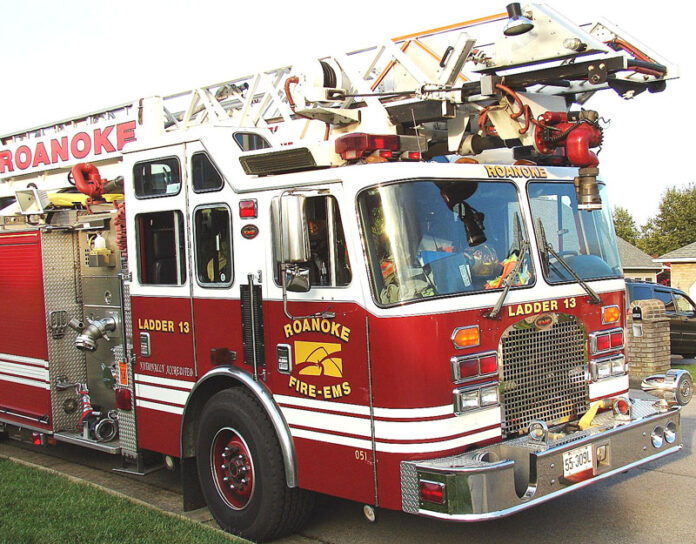The “first due” fire engine can get anywhere within the city in four minutes. The benchmark is to respond to fire calls in four minutes 90 percent of the time
When the first due engine is out of service the second due engine can take up to12 minutes to reach the fire. “When the No. 9 station on 24th street was closed we lost an engine company,” explained a longtime Roanoke City firefighter who spoke on condition of anonymity.
He said that working fires in 2010 came in at 119 disputing Chief David Hoback’s report of 91 working fires to city council on March 7.
The Roanoke Firefighters Association filled council chamber in 2008 when James Grigsby was fire chief. The dispute was primarily over the proposal to reduce manpower per truck from four to three. They lost that argument. Having four men per engine is a nationally recognized standard. It’s considered the minimum number needed to safely attack a structure fire.
Chief Hoback gave city council members a Fire Service Report at a briefing on March 7. Hoback’s message was that EMS calls had increased 25 percent in the past five years due to Roanoke’s aging demographic. Fire calls had decreased seven percent over the same period but increased 10 percent in 2009-2010. More if you go by the firefighter’s figure.
In 2010 the four-minute benchmark for fire calls was met 79 percent of the time. A drop from previous years reported at 86 percent. Arsons have increased a whopping 57 percent.
The 2010 performance standards that went unmet totaled 19. They included bad cell phone calls and bad weather. What prompted some questioning from council members were the six times the first engine was “out of service” and the second due from another location had to respond. “This was a very busy year,” said Hoback.
Hoback said he was looking into why the engines were out of service. He thought that cutting down on an engine being dispatched on an Advance Life Support (ALS) call would help the department reach the 90 percent benchmark.
“Everything that the [RFFA] said years ago has held true,” said the anonymous firefighter. He disputed that fires had decreased. “They have at least stayed the same,” he said.
He explained that they only have two reserve ladder trucks and “there have been multiple occasions in the past couple years where both reserve pieces are being used and the third truck breaks down and we don’t have a reserve.”
There were other instances where a ladder company was responding in pickup trucks. There are not enough ladder trucks in the city. He said that the quints, multi-purpose engines that replaced ladder trucks, have mechanical problems and there are issues with their weight being on single in lieu of tandem axles.
“We have mandatory and company level training that they didn’t figure in,” he said. They are out of service when at the regional training center on Kessler Mill Road or downtown for OSHA class. “When a call comes in then the second due has to cover it but if it is out on a call the third due takes the call and there is no way we can get there in four minutes,” he said.
Their equipment is in good shape. We just don’t have enough engine companies and we don’t have enough men. “The calls are so scattered out now and we are spread so thin,” he said.
Their response time out the door is less than 45 seconds. He didn’t understand how Hoback captured the 45-60 second reaction time cited in the report. “There is no mechanism in place to measure that,” he said. With the help of a grant onboard computers will more accurately reflect reaction times as long as they don’t forget to hit the button at the door.
He was proud of their record of being able to contain fires to the first floor. The worst type of fire is the “balloon” fire. This form of construction creates a path for fire to easily travel from floor to floor with no firestops at each floor level. “Our guys do an excellent job of getting to those fires and containing it to the room. If it starts in your bedroom we hold it right there,” he said.
When the roof blew off of the three-story Sterlingwood apartments last week there were 2 engines, 2 ladder trucks and a heavy tactical truck needed at the scene. Superiors were fretting that there were not enough trucks in service to take care of the rest of the city.
“If we have two working fires almost every piece of equipment is committed. We wouldn’t be able to handle another incident. That’s the stuff we are facing every day. When we’re out they try to get us to cut corners and get back in service before another call comes and they get caught with their pants down,” said the anonymous firefighter.
“It’s a shame that it may take two big fires at the same time that either kills a fireman or prevents us from being able to get some civilians out before anyone notices. Then everyone will be behind us and back the fireman but now it’s just not that way,” he said.



